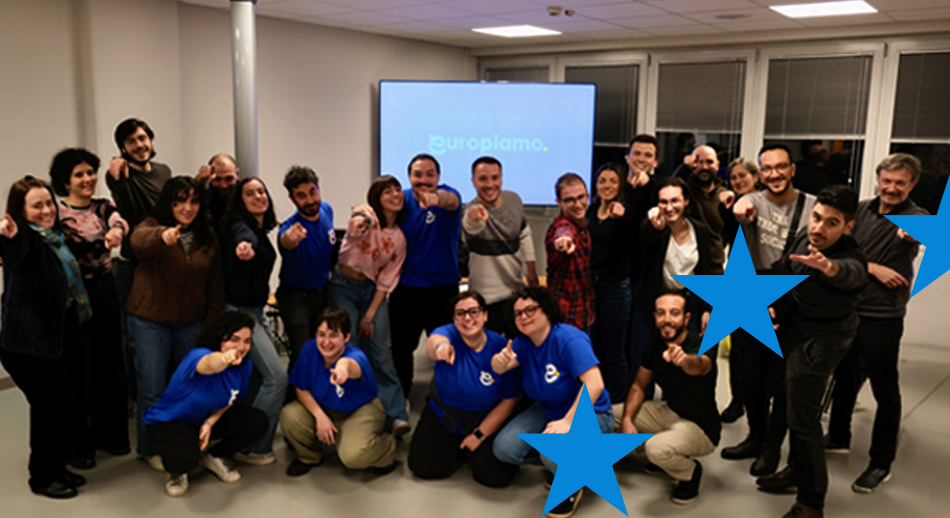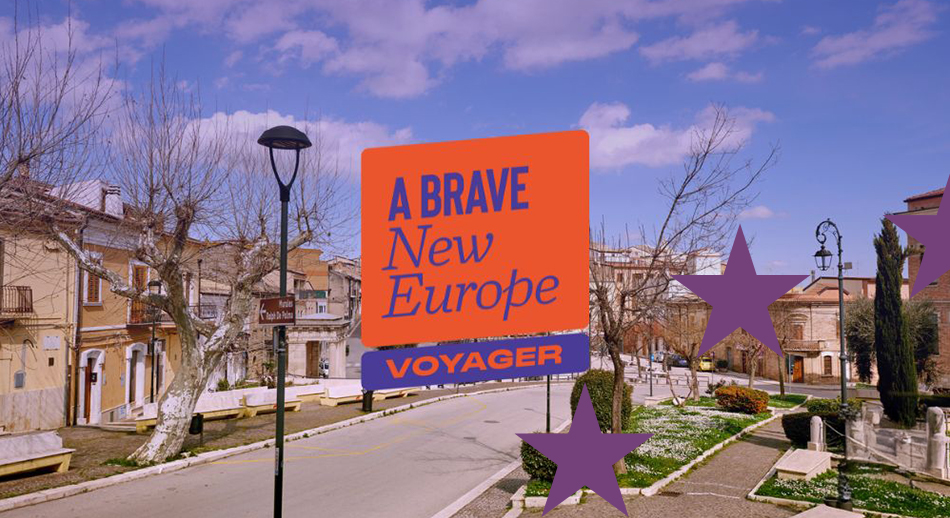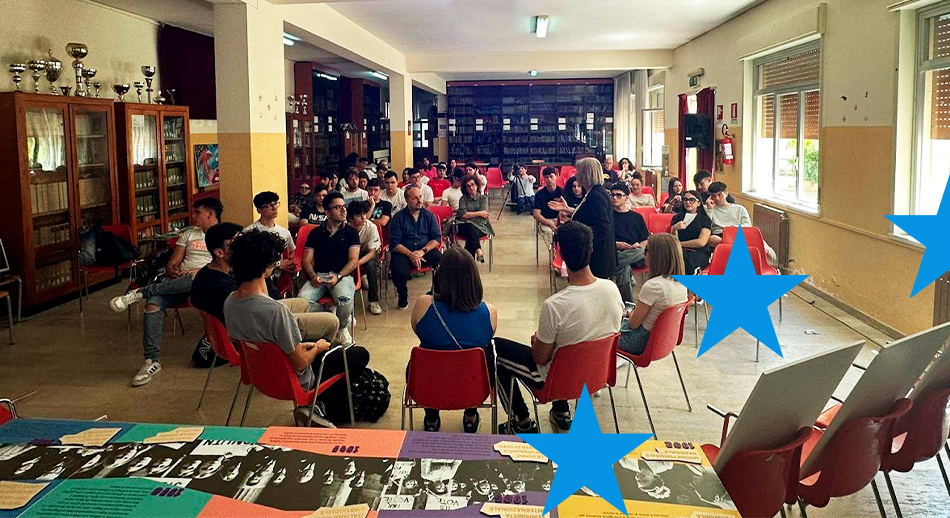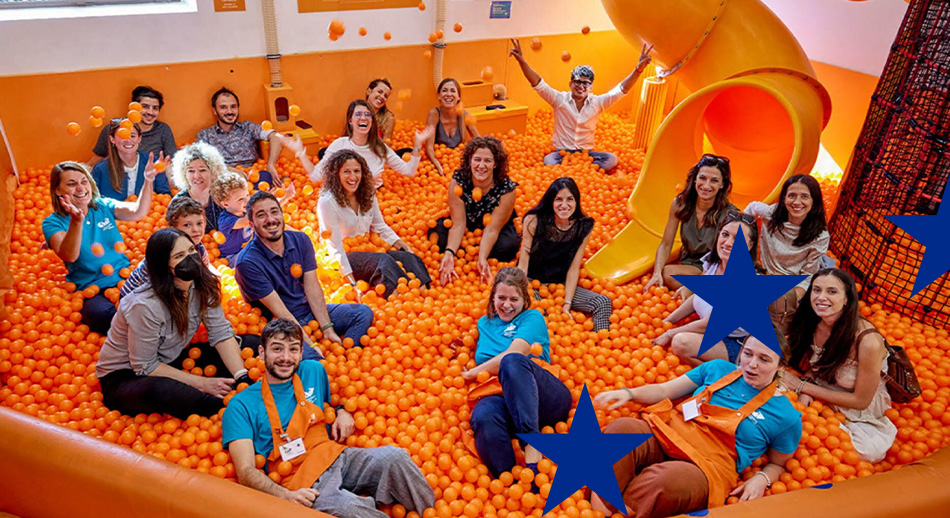The reflections and experience of Europiamo: an association founded and run by young people to promote the opportunities offered by Europe to young people.
Europe and youth: always together
Europe and young people are an inseparable pair. Europe, as we know it today, was born to give hope and perspective to young people after half a century of wars. Europe’s image-and above all, its freshest, most dynamic and positive image-is closely associated with youth mobility and the experience of the Erasmus program, which has marked generations of young Europeans and helped build a European spirit and identity. Today’s Europe also looks to young people: one of the EU’s key-strategies (the EU Youth Strategy), a specific portal and many initiatives dedicated to them are dedicated to young people:
- Erasmus+ (which offers young people the opportunity to study, train and gain experience abroad);
- European Solidarity Corps (initiative for youth solidarity projects and activities);
- European Youth Week (to talk about stories, issues and opportunities for young people);
- Eures (the European support portal for job opportunities abroad);
- EU dialogue with young people (mechanism for dialogue between young people and policy makers);
- DiscoverEU (an initiative offering 18-year-olds a pass to travel and discover Europe);
- Young Journalists in Europe (an initiative dedicated to the work and stories of young journalists).
However, data and experience show that that between young people and the European Union, and more generally that between young people and civic and democratic participation, is a relationship that needs to be built and nurtured, all the more so in the current climate of polarization, in which these values are being challenged. According to a recent Eurobarometer analysis, about one-third of young Italians and Europeans are skeptical about the impact of the EU on their daily lives. A February ASviS report shows that young people are the social group that most abstains from voting (42 percent in the 2022 general elections) and that 74 percent of them would participate more willingly if there were more young people among the political players.
Europiamo: by young people, for young people
We start from these reflections and data to tell the experience of Europiamo, an association that was officially born four years ago and represents a reference point for the activity of young Italians on European projects, European citizenship and the presence of young people in European policies. In fact, its activity is based on three main points:
- A for Advocacy: giving voice to the interests and rights of young people and youth associations that believe in European potential, building tables of dialogue with institutions and contributing to improving the quality and impact of youth policies and youth work;
- B for Best Practices: to collect, share, disseminate and disseminate good practices, experiences, procedures, and actions that are significant and that have led to the best results within the world of European projects dedicated to young people, particularly Erasmus+;
- C for Citizenship: encouraging and fostering the role of European citizenship, supporting the personal and professional growth of young people through European mobility opportunities – and in this way “bringing Europe where it is not yet.”
We talked about this with Matteo Sisto, co-founder of Europiamo. Engaged on many fronts of social and nonprofit (he calls himself a “serial nonprofiter”), he considers Europiamo one of his luckiest creatures. Europiamo is the fruit of a journey started in 2018 with Gianluca Rossino, of a different and somewhat crazy way of trying to change the way young people are perceived in Italy and Europe. Along with him, Gianluca Latocca: active on youth policy since he was 17, with an international profile (he worked for a long time for Impact Hub in Vienna), he too has seen the association born and grow, transforming a group of friends into a reality of local and then national prominence. The association is consistent with its ideal of being not only “for theyoung” but also “of the young“: it has an exclusively under-30 board, a focus on generational turnover, and has an organizational system based on participation and co-management, as recommended by the guidelines (“Youth Essentials“) of the Council of Europe. It welcomes among its members both young people and youth associations-which also adopt (some for many years) a governance approach based on participation and generational turnover.
D. Your association is called “Europiamo.” Why start from Europe to talk to young people?
R. For several reasons. First, for reasons of heart and ideals: Europe is the greatest experiment in history to unite people and value their diversity. The European Union has a motto, “united in diversity,” which is the same one we adopt as an association. Erasmus of Rotterdam is the ideal inspirer of the main European youth program and is also the author of In Praise of Folly: the same folly that led the founding fathers of the EU to imagine a Free and United Europe at a time of total war and confinement in Ventotene. We embrace this folly and believe in Europe-and more particularly in Europe as an opportunity for young people. To paraphrase the founding fathers, not because Europe is “an easy and safe way,” but because this is “a way that must be taken.” Why? For reasons of a practical nature and nowadays, I think, particularly obvious. Not only for young people, but more generally for the citizens of our continent. A united Europe brings with it difficulties and contradictions, but it is the only way to survive in today’s world. This is as true in the world of international relations as it is in the daily lives of citizens and young people. It is to Europe that young people and youth associations look when they seek opportunities for growth, opportunities for learning, opportunities for work. Young people have a vocation to want to improve society, and in today’s world it is unrealistic to think of doing so without confronting what is happening at the European and global level. Our responsibility is to build a space for young people within our society, to give them the tools to take concrete action and generate positive change. European opportunities are the most concrete means we know of to generate this empowerment.
D. Young people-like Europe-are at the center of your mission. Who are the young people you speak to and why is your mission important?
R. For defining “who young people are” there is no one-size-fits-all parameter. Certainly “young” does not mean “immature,” nor should it be a way to define oneself socially at any point in life. There is a Council of Europe report that analyzes differences in definition between European countries. In Italy, as in most countries in Europe, the anagraphic definition of “young” varies between the ages of 14-15 and 28-35. We therefore specifically address young people, albeit with the natural variability associated with this concept; and young people are by no means a “monolithic” reality but very articulate, as our motto “united in diversity” highlights. But for us to talk about “youth” means even more generally to talk about “education” and “citizenship.” Our association itself represents an “educational process” for those who are part of it. It is constantly evolving and is an instrument of education for citizenship. Why is it important to work for and with young people? Because they represent a great deal of wasted potential for our country. They are an already rare resource, for demographic reasons, and not valued at all. The prevailing attitude in our country is one of paternalism: public policies devote little resources and (above all) little involvement and few opportunities for participation to them. In other countries, such as Austria (a neighboring country with which we are familiar), budgets devoted to youth are of a different order of magnitude and are managed in a participatory way. We echo in this the slogans used by many activists, but no less true: “Nothing about us, without us” and “Youthless policy is useless policy.” Youth are not the future, but the present. Putting young people at the center means giving dignity and a future to our country. This concept, and the perception of how neglected it is, is both what angers us and what motivates us to move forward. We need realities, allies, who will expend themselves for this cultural change.
D. In what does your work on behalf of young people-or better yet, with young people-involve?
R. Our activity has as its reference point the European Youth Agenda and its 11 goals (which also have their own official website). We specifically focus on:
- Objective 1 (Connecting the European Union with Young People): to promote new generations’ sense of belonging to the European project and build a bridge between them and the European Union in order to regain their confidence and increase their participation;
- Goal 9 (Space and Participation): strengthen democratic participation and autonomy and provide dedicated spaces by helping the younger generation in all sectors of society;
- Goal 11 (Youth Organizations and European Programs): ensure equal access to youth organizations and European programs for the younger generation, building a society based on European values and identity.
These are very broad and ambitious goals, around which we have tried to build a strategy, channeling our energies (for now!) on the following programs:
- Generation-E: a program aimed at communicating to young people the opportunities offered by European programs to grow personally and professionally, especially in terms of international study, work, internship, exchange, training and volunteer experiences. It consists of an electronic platform, where we present existing opportunities and upcoming events. We also organize presentation moments in cities and schools, including in partnership with other bodies and organizations pursuing the same goal. We would also like to launch a mentorship activity, to support young people in identifying opportunities;
- Europe Workshops: a program aimed at supporting young people in writing projects, learning how to design and “ground” their ideas, giving them a space to realize them. We work mainly on two specific tools, on which we have also developed an initial guide:
- European Solidarity Corps “ECS 30” projects, a very affordable line that allows informal groups of young people (under-30) to start their own solidarity project;
- Youth participation activities of Erasmus+ (KA1), which support activities outside formal education and training aimed at promoting young people’s participation in the democratic life of Europe at local, regional, national and European levels.
So these are not only actions related to international youth mobility, but also “youth-led” activities for their local organisations. We have also started working on specific opportunities from the CERV program. We offer a full course in European planning and give support in creating concept notes;
- Youth participation: this is a strand of activity that manifests itself in many ways, especially at the civic, citizen level. In fact, we believe that you cannot talk about European citizenship without first building a solid foundation of local citizenship. We have been active for 4 years to support these mechanisms and make young people understand the value of civic participation. We started 4 years ago by working with youth councils, and we are (and are) looking for other solutions and other forms of support for youth participation at the local level that fit the needs of different youth realities. In 2025 we will activate the first pathways to train young Democracy Facilitators, figures who can support the creation of participatory processes, at the local level, for new generations in all the municipalities of Italy;
- Educating about Europe: Europe is often told as something complex, with complex terms. It is necessary to get to the heart of people, to make people really understand. To do this, we need to simplify a lot: this is how the people who founded it would have done it. For example: explaining that the Commission is “a kind of EU government” is not formally correct but it is a simile that can help clarify. We have recently started an online training with 6 institutes in the Lazio Region, created a simple glossary and debunked a number of “myths” that present EU action as something unnecessarily pervasive. We conducted outreach activities around Italy before the European elections, which were received with enthusiasm and participation.
We also have a newsletter that talks about youth policy and work with the Erasmus plus coalition on advocacy activities for funds and projects dedicated to youth.
D. What has been your approach to European projects? What advice do you give and what obstacles do you most often come up against?
R. We are involved in Europe, and many youth organizations that are part of Europiamo implement European projects as an integral part of their activities.Therefore, our interest in European funds and projects was natural and immediate. European funds and projects give sustainability and resources to the work of youth organizations. They represent opportunities for better planning and programming to envision a future through project writing and implementation. Everything “on top” of European projects is also important. Your Guide to EU Projects and Funding is one of the few tools that clearly explains that EU projects and funding are a means to achieve political objective. This is a right and healthy way to approach European projects. However, in countries where other investments (public and private) dedicated to youth are more scarce, such as Italy, European projects become an indispensable tool for stability and sustainability. This can take away lucidity and generate two opposite tendencies: either distorting what European projects are supposed to be (leading to considering them an “ATM” instead of a response to a social and political need); or distorting their mission, chasing the goal of the call for proposals in order to acquire resources that can make up for what is called the “starvation cycle,” or the situation of systematic underfunding of nonprofits. This is the difficulty that we come up against most often. And this is why our advocacy is also important: to mobilize funding of other kinds, public and private, and to make the funding arrangements closer to the daily reality of small associations, which come up against the constraints imposed by projects and the “starvation cycle” every day. Procedures have improved and opportunities more suitable for small youth associations can be found, such as ECS 30 and Youth participation activities. But great strides are still needed: many European programs and calls for proposals have a set of conditions and requirements that discourage the participation of small youth organizations. Bureaucracy is a barrier to the implementation of good projects and takes away mental, human and material resources that could be better spent. Much bureaucracy is avoidable, and there is often a clear logical and operational gap between the requirements and the reality of a project. Ninety-nine percent of the difficulties they face for youth groups and associates concern the administrative side. In this, the figure of the coach, which exists, for example, in the context of ECS 30 funding, is very useful. That said, European projects are capable of creating wonderful stories. Our association and our team are direct witnesses to this as well: we have all been engaged, in different ways and at different times, on various European projects. And even the mobility initiatives, typical of Erasmus, are experiences that mark you for life and make you grow like few other things in the world. The advice we give our members is a lot, and much of it we have also found in the pages of your Guide.
We can collect them in three major stages of a journey–first and foremost mental–that can help “break the ice” with European projects:
- not be discouraged and start small, possibly in partnership with other more experienced entities;
- convince themselves that writing a project, gathering ideas and partners around a common goal, grows the association regardless of the outcome of the bid;
- don’t miss opportunities to ask questions, to get help from anyone who can lend support, and to build community and relationships-which are not just “human aspects,” but a key part of an association’s professional and organizational growth journey.
We thank Matteo Sisto and Gianluca Latocca, leaving you to process their reflections and advice. With the hope that your projects will change you, help you change the world and take you far: just like an Erasmus experience.




